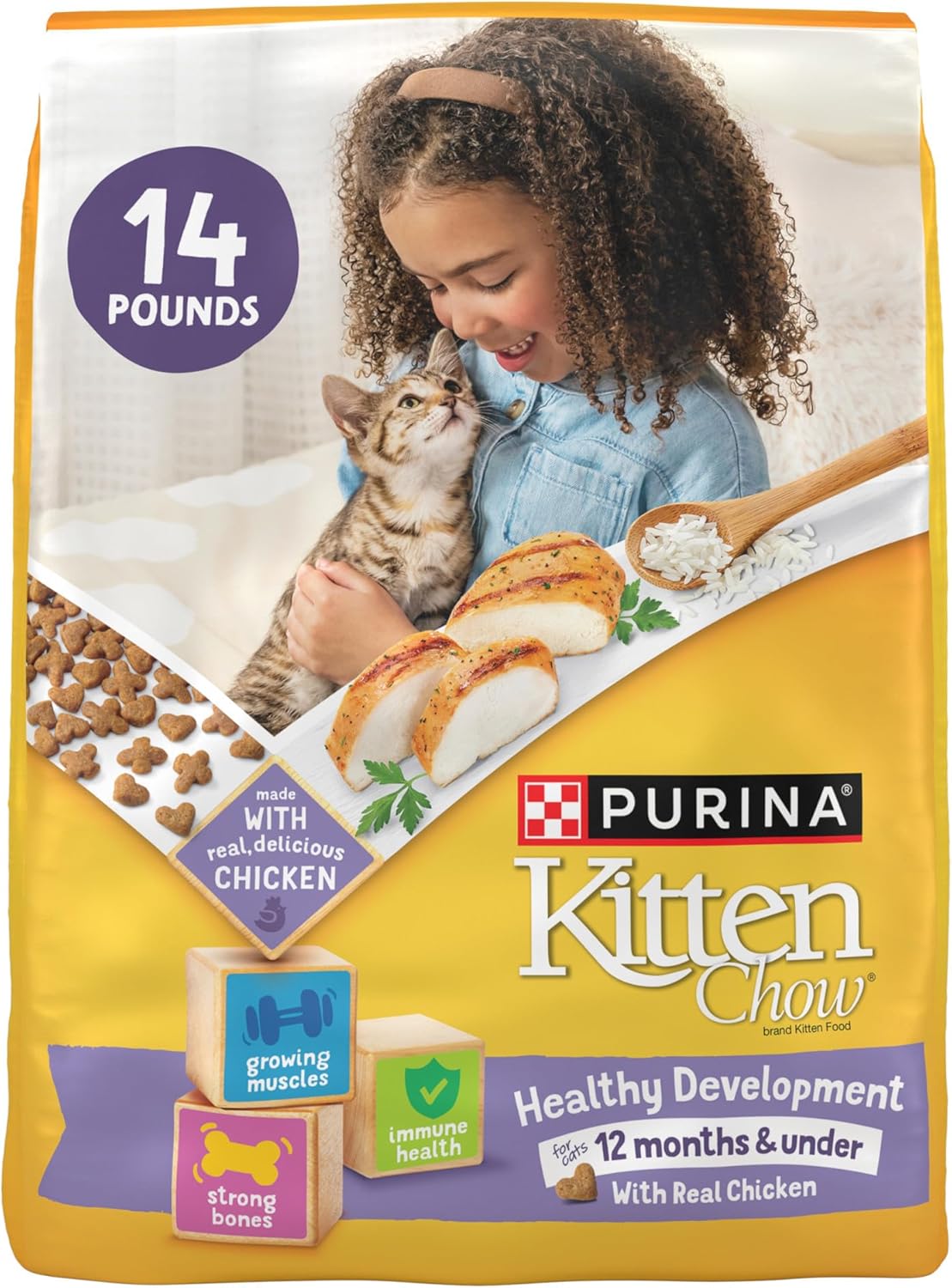











Price: $18.29
(as of Apr 07, 2025 16:28:52 UTC - Details)
The Ultimate Guide to Choosing the Best Kitten Food
Introduction
Bringing a new kitten into your home is an exciting experience filled with joy and companionship. However, one of the most important decisions you’ll make is choosing the best kitten food. A proper diet is crucial for your kitten’s growth, health, and overall well-being. In this guide, we’ll explore everything you need to know about selecting the right food for your furry friend. From understanding nutritional needs to comparing popular brands, we’ll cover it all. Let’s dive into the world of kitten nutrition and find out what’s the best kitten food for your little bundle of joy!
Understanding Kitten Nutritional Needs
Why Nutritional Needs Matter
Kittens have unique dietary requirements that differ significantly from adult cats. They need a higher protein content to support their rapid growth and development. Additionally, essential nutrients like taurine, DHA, and vitamins play a vital role in their overall health. When searching for the best kitten food, it’s crucial to look for formulations specifically designed for their life stage.
Key Nutrients for Kittens
When choosing kitten food, keep an eye on these essential nutrients:
- Protein: Look for foods with high-quality animal proteins. This helps in muscle development and energy levels.
- Taurine: An essential amino acid that supports heart health and vision.
- DHA: An omega-3 fatty acid important for brain development.
- Vitamins and Minerals: Ensure the food is fortified with vitamins A, C, D, and minerals like calcium and phosphorus for bone growth.
Types of Kitten Food
Dry Food vs. Wet Food
When it comes to kitten food, you might wonder whether to choose dry or wet food. Both have their benefits, and combining them can be a great option.
- Dry Food: Convenient and helps with dental health by reducing plaque. It’s also more affordable and has a longer shelf life.
- Wet Food: Contains more moisture, which is beneficial for hydration. It’s often more palatable for picky eaters and can be easier for kittens to chew.
Grain-Free Options
Some owners prefer grain-free kitten food, believing it to be more natural. While many cats thrive on grain-free diets, it’s essential to ensure that the food provides all necessary nutrients. Research shows that not all cats need a grain-free diet, so it’s best to consult with your veterinarian before making a decision.
Evaluating Kitten Food Brands
Popular Kitten Food Brands
When searching for the best kitten food, you’ll come across various brands. Here’s a breakdown of some popular options:
- Hill’s Science Diet: Known for its vet-recommended formulas, Hill’s offers balanced nutrition tailored for kittens.
- Royal Canin: This brand specializes in breed-specific and age-specific diets, providing targeted nutrition.
- Blue Buffalo: Offers natural ingredients and is free from artificial preservatives, making it a favorite among health-conscious pet owners.
Reading Labels
Understanding pet food labels is crucial. Look for the following when evaluating kitten food:
- Meat as the First Ingredient: This indicates high-quality protein.
- No Fillers: Avoid foods with excessive fillers like corn or wheat.
- Nutritional Adequacy Statement: Ensure the food meets AAFCO (Association of American Feed Control Officials) standards.
Homemade Kitten Food: Is It Worth It?
Benefits of Homemade Food
Some pet owners opt to prepare homemade kitten food. This allows for more control over ingredients and can cater to specific dietary needs. However, it’s vital to ensure that homemade diets are balanced and meet all nutritional requirements.
Potential Risks
While homemade diets can be beneficial, they also come with risks. It’s challenging to create a balanced diet without proper knowledge. Nutritional deficiencies can lead to serious health issues. If you’re considering homemade food, consult with a veterinarian or a pet nutritionist.
Transitioning to Adult Cat Food
When to Make the Switch
As your kitten grows, you’ll eventually need to transition to adult cat food. Typically, this happens around one year of age. Transitioning too early can lead to nutritional imbalances, while waiting too long may not provide the necessary nutrients for a growing cat.
How to Transition
When changing your kitten’s food, do it gradually to avoid digestive upsets. Start by mixing small amounts of the new food with the old food, increasing the new food portion over a week or so.
Conclusion
Choosing the best kitten food is a critical aspect of ensuring your new furry friend has a healthy start in life. Remember to prioritize high-quality ingredients, appropriate nutrient levels, and your kitten’s specific needs. Whether you opt for dry, wet, or homemade food, the most important thing is to provide a balanced diet that supports their growth and development. By understanding their nutritional needs and evaluating various options, you’ll be well on your way to selecting the perfect food for your kitten. Happy feeding!
Purina kitten food made with 25 percent more protein (vs. leading adult cat food) and real and delicious farm-raised chicken helps support the development of lean muscles as she jumps and plays
High protein cat food for kittens with DHA in every serving to support her brain and vision development as she grows
Purina Kitten Chow Healthy Development Dry Kitten Kibble features the essential building blocks of nutrition to help her grow healthy and strong
Cat kibble for kittens expertly prepared with high-quality ingredients and no artificial colors and flavors, so you can feel great filling her dish
Your kitten has a lifetime of happiness ahead, and keeping her healthy from the start is the first step to a life well-lived
